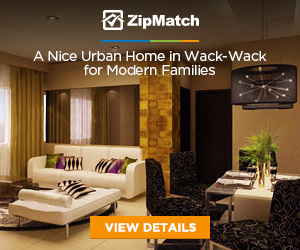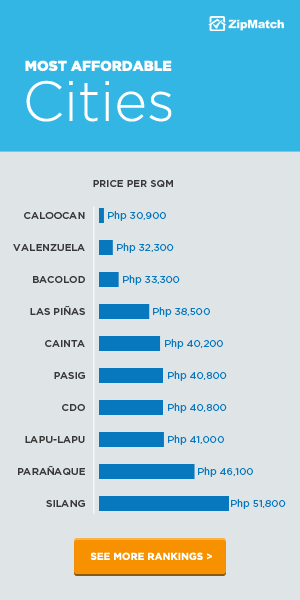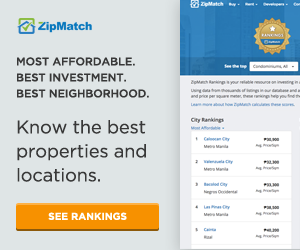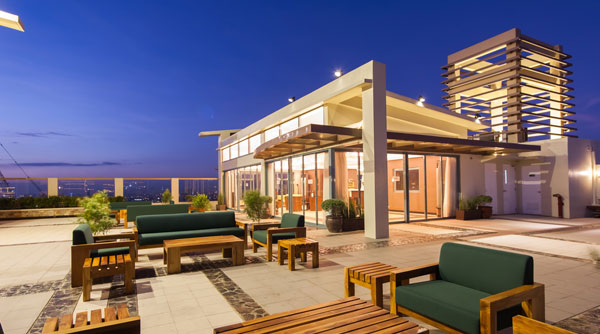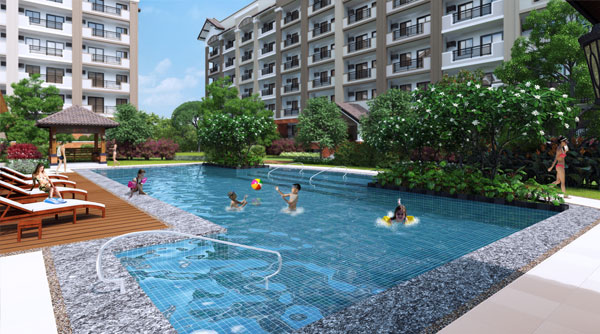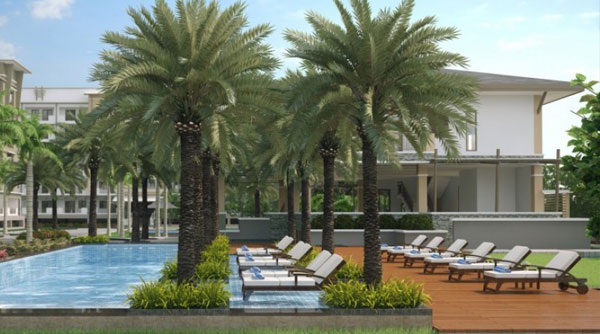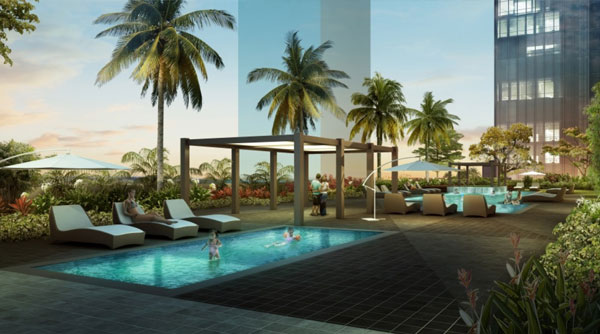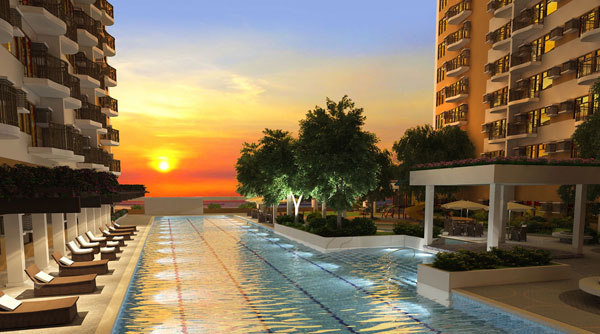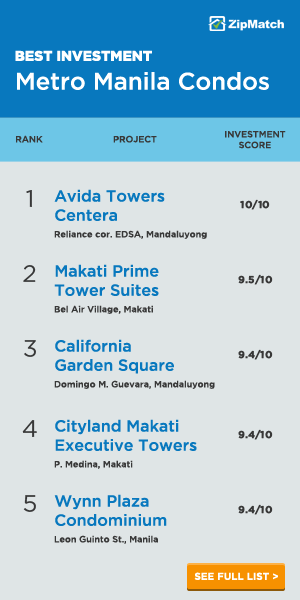Finding an apartment or condo for rent in the Philippines can be an exhaustive task, especially if you don’t have all the time in the world. It may not be as rewarding as investing on a real estate that you can call your own, but it’s quite a relief to be able to find the apartment or condo unit that can make you truly at home at the right price.
Apartment, Condo hunting in the Philippines
Thanks to the real estate boom in the Philippines, the rental market can be quite competitive, especially in certain location hotspots like central business districts, townships, or tourist destinations. Urban professionals to starter families are always on the lookout for an apartment or condo unit for rent that is near work, school, or the nearest transport access point (or why not all three?). Vacationers look for short-term rental properties that are inclusive of free amenity access at deals better than a hotel reservation.So if you find yourself looking to rent an apartment or condo and you need to find it ASAP, take a deep breath. Check out our digestible Guide to Renting An Apartment or Condo in the Philippines.
Know Your Rental Lingo
Knowing is just half the battle. Knowing what exactly the terms used, especially when you’re negotiating with the landlord or leasing agent, will help you land the deal you want on the property rental you want.1. Lease
Often confused with the term “rent,” lease, by definition, is a contract between you (the renter) and the landlord or leasing agent about you renting the property being put up for rent.2. Tenant
A person (that’s you!) who occupies the property leased out by a landlord or leasing agent.3. Landlord
A person who owns, or is hired to oversee or manage, the apartment or condo being rented out. Sometimes, landlords are also charged with the responsibility of actively looking for prospective tenants.4. Leasing agent
A person who is hired or employed by the homeowner or firm to find tenants for the apartment or condo for rent. Leasing agents in the Philippines are licensed with the Professional Regulation Commission.5. Leasing agreement
This is the lease in a written, legally binding document. This document will contain all of the terms and conditions related to your apartment or condo rental. The leasing agreement will be legally binding as soon as you and the landlord or leasing agent both signed the document before or on the document’s effective date.6. Deposit/Security Deposit
Also called a “security deposit,” the deposit is a sum that you leave to your landlord or to the leasing agent to secure your apartment. A typical deposit arrangement for an apartment or condo rent in the Philippines is one to two months’ rent. For long-term arrangements, the deposit amount is a whole year’s worth of rent.The deposit acts as a property insurance against two instances. The deposit is kept by the landlord or leasing agent throughout your lease term to cover for any damages (incidental or not). The deposit also acts as a collateral to prevent you from leaving in the middle of your lease term.
7. Semi-furnished
This is a term described to an apartment or condo rental that is furnished with the basic big pieces of furniture (sofa, bed, dresser and table and chairs). Some semi-furnished rentals also come in with other small appliances or decorative pieces. It can either be offered as a package with the advertised rental fee or as an option you can avail at a premium.
8. Fully-furnished
This is a term described to an apartment or condo rental that is furnished with everything as if the future tenant can move in at any time. It can either be offered as a package with the advertised rental fee or as an option you can avail at a premium.TIP: If you ever find yourself renting a semi-furnished or a fully-furnished unit, make sure to conduct an inspection with your future landlord to avoid future arguments about the condition of the furnishings and fixtures (and further deductions on your security deposit). This is also applicable for a bare but new unit.
Here’s a punchlist you can use.
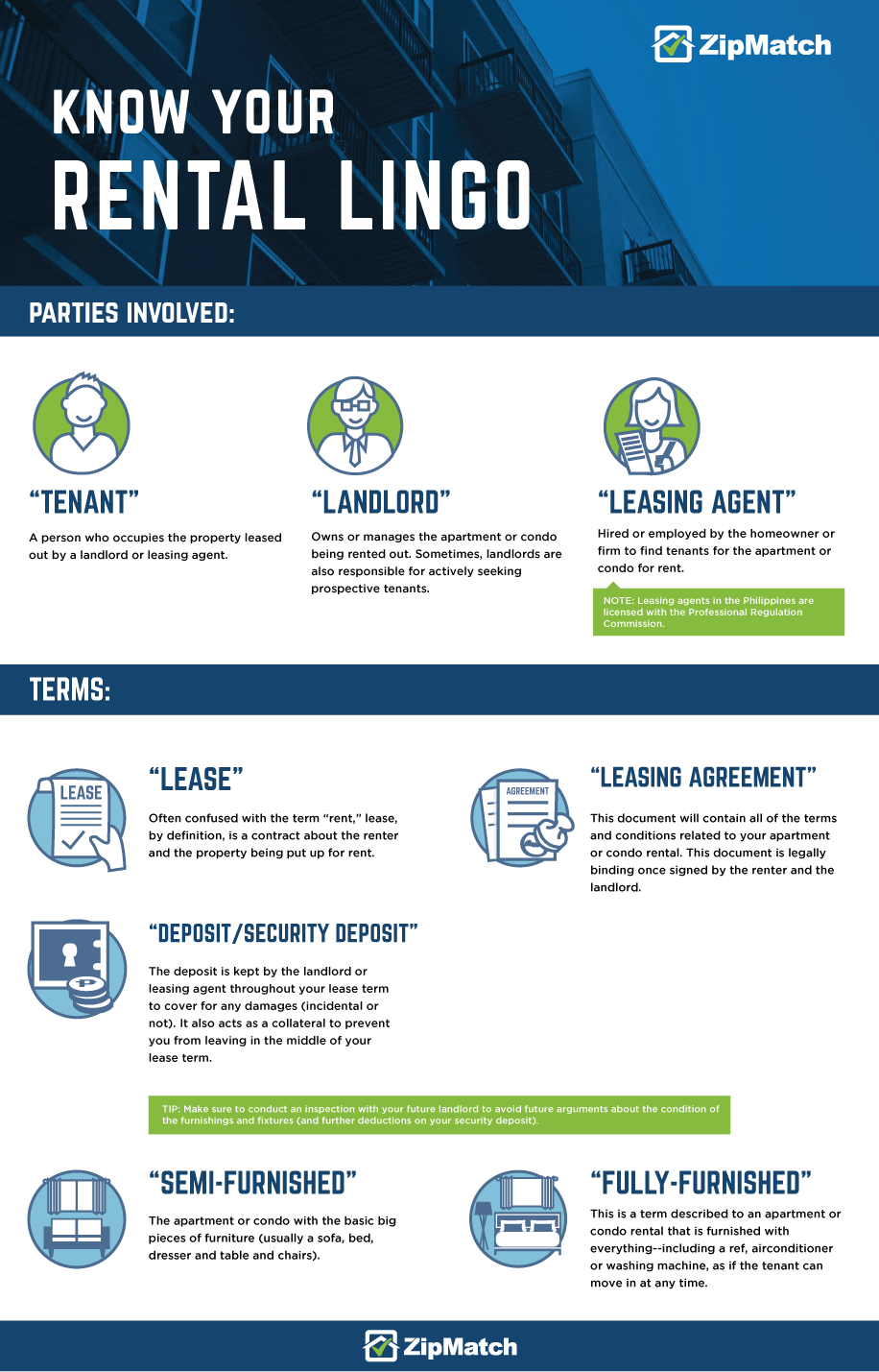
Home Rental Process:
1. Search for property rentals online or via recommendation that you think are worth visiting.
Depending on your property preferences and considerations, search until you compiled a list of favorites you think could be your next home.Some property considerations would be:
Lifestyle amenities
Amenities, by definition, are desired or useful features or facility of a building or development. In the last few years, being able to obtain or continue your lifestyle is an important consideration in your next rental. This is simply because lifestyle can now be easily equated to the level of comfort one wants (or can do away with) in your apartment or condo rental.Almost all condominium projects come with the basic to the most luxurious amenities. Some residential communities are now following suit, offering similar amenities or are now slowly transformed with the help of nearby townships or business districts.
Affordability
What does your budget look like? If you’re really on a tight budget, bed or room shares in dormitories to studio apartments or condos are the typical go-to real estate choices.But if you’re planning to live in your rental for a little while longer, you can really save money on moving to a slightly better rental in the long run. On the other hand, the trade up would be shouldering “homeowner’s costs” that may or may not be inclusive in your property rental: homeowners’ association (HOA) fees, parking, and mailbox rental.
Price per square meter
A studio condo in Makati Central Business District might be similar on paper to the same unit in Pasong Tamo, Makati.But the real test to know whether which rental is a great deal is if you compute the price per square meter. After all, the price of the Makati CBD studio could be the same as a one bedroom condo unit in Pasong Tamo.
The real challenge with this step is to narrow down the list to the ones that are worth your budget and your time later on. But as long as you know which considerations are important to you, you’ll be more confident as you move on to the next step(s).
2. Schedule a visit with your prospective property’s landlord or leasing agent.
Before agreeing on a schedule, ask the landlord or leasing agent over the phone or email if there is already an application or how many have applied. This way, you can gauge which ones are popular and you’d know how to strategize or negotiate the property you like to your advantage.
3. Inspect the property for potential fixes you want to get done (or willing to compromise).
Newly-built rentals require less fixes as compared to other dated units. For older properties, you can make certain allowances as long as they will not inconvenience you should you decide to rent the property. Moreover, your inspection will help you confirm the details already made available on the rental listing. You can either download a pre-made punchlist or create a list of questions on your own based on your research.At this time also, you can ask questions about the landlord’s responsibilities to its tenants and the lease agreement.
4. Explore the neighborhood of your prospective rental.
A rental can only be great if it’s situated in a great neighborhood. If you’re moving to an area you already know or that’s close to where you live now, you already have the luxury of knowing what to expect should you decide on settling on the prospective property.If you’re new to the neighborhood, you can also take the opportunity to explore your prospective rental’s location before or after your scheduled visit. Have lunch, dinner, or coffee at a local shop. Have a friendly chat with a resident or the property’s staff to get a different perspective of the neighborhood.
5.When you have decided on the property you want to rent, go over the lease agreement one more time, especially with your landlord.
Never wait for your landlord or leasing agent to educate you. It should be your top priority to familiarize yourself with the details of your lease agreement. This way, you’d know your rights as a future tenant. Moreover, you and your landlord or leasing agent could agree on adding any provisions you think should be included in the agreement.
Before you sign that lease agreement…
Your lease agreement will be full of details crucial to your business relationship with your landlord and your tenancy, whether it’s for short-term or long-term.
Here are the basic terms that should be in your lease agreement:
Limit, use, and return of your deposit Rent payment due and payment mode Rent increase and/or increase in fees relevant to your tenancy (ex. parking fee increase, HOA fee increase) Repairs and maintenance accountability during lease period Tenancy terms and rules, including lease renewal or termination due to unexpected circumstances (ex. property sale by owner, building damage due to weather)
Conclusion
Perhaps the most important tip is that while it pays to be careful, don’t waste time for the next great deal. You might think that it would be a great idea to delay your decision and maybe wait for the next apartment or condo unit that might open for rent. However, the best deals are the ones that were seized at a moment’s notice (after careful consideration, of course), and not those that are waiting to happen.




